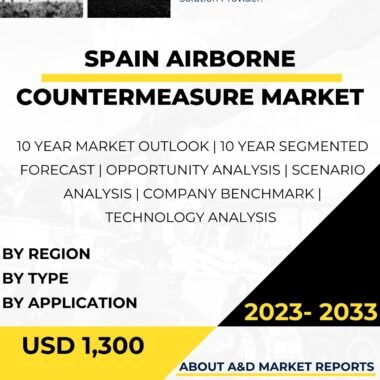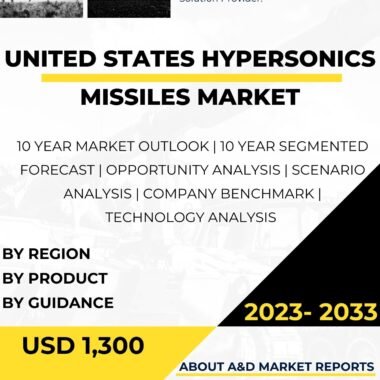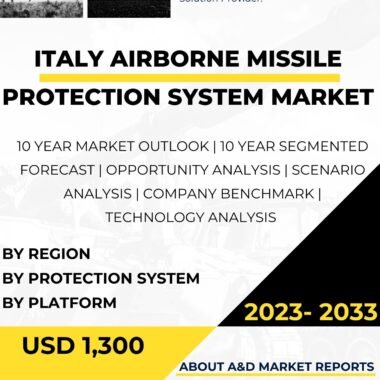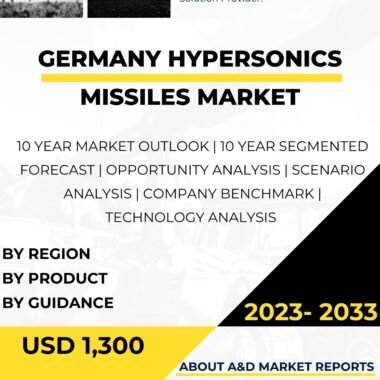Description
The Saudi Arabia Airborne Countermeasure Market is a significant sector focused on enhancing the protection of aircraft from hostile threats, particularly missile attacks. As a crucial player in the Middle East region, Saudi Arabia recognizes the importance of maintaining a strong defense posture in its airspace. This article will provide an overview of the country’s airborne countermeasure market, including its current status, major players, challenges, and future prospects.
The Saudi Arabia Airborne Countermeasure Market is part of the country’s broader defense industry, which has experienced significant growth over the years. The government’s commitment to strengthening its defense capabilities, coupled with the evolving security landscape in the region, has driven the demand for advanced airborne countermeasure technologies.
Airborne countermeasures encompass a range of systems designed to protect aircraft from various threats, including radar-guided and heat-seeking missiles, as well as anti-aircraft artillery. These systems employ a combination of passive and active measures to confuse or neutralize incoming threats and ensure the safety of aircraft and their crew.
The market comprises both domestic and international players. The Royal Saudi Air Force (RSAF) plays a central role in the country’s airborne countermeasure efforts. The RSAF is responsible for operating and maintaining various aircraft, ranging from fighter jets to transport and reconnaissance planes, all of which require effective countermeasure systems to mitigate potential risks.
As part of its modernization drive, the RSAF has collaborated with leading international defense contractors and suppliers to acquire state-of-the-art airborne countermeasure technologies. These partnerships have facilitated the integration of advanced defensive systems into Saudi Arabia’s aircraft fleet, enhancing their survivability in hostile environments.
The Saudi Arabia Airborne Countermeasure Market faces several key challenges. One of the primary concerns is the continuous evolution of missile and anti-aircraft technologies employed by potential adversaries. As threats become more sophisticated, there is a constant need to invest in research and development to stay ahead of the curve and effectively counter emerging threats.
Another challenge is the complexity and cost of integrating modern countermeasure systems into existing aircraft platforms. Retrofitting older aircraft with new defensive technologies can be a demanding task, requiring careful planning and coordination with aircraft manufacturers and defense contractors.
Additionally, ensuring effective training for aircrew personnel to utilize these countermeasures optimally is crucial. The RSAF must invest in training and simulation facilities to familiarize pilots and aircrew with the latest countermeasure systems, ensuring they can respond swiftly and appropriately in high-pressure situations.
Despite these challenges, the future prospects of the Saudi Arabia Airborne Countermeasure Market are promising. The country’s defense industry is expected to continue growing, driven by its commitment to modernization and bolstering its capabilities to meet emerging threats.
Technological advancements in airborne countermeasures present opportunities for the market’s growth. Innovations such as directed energy countermeasures, more advanced electronic warfare suites, and machine learning-based systems hold the potential to significantly enhance aircraft protection.
Furthermore, Saudi Arabia’s growing interest in domestic defense industry development offers opportunities for local companies to contribute to the airborne countermeasure market. Establishing partnerships with international defense firms and acquiring technology transfer can empower the country to manufacture and maintain its countermeasure systems, reducing dependence on foreign suppliers and enhancing self-sufficiency in defense.
In conclusion, the Saudi Arabia Airborne Countermeasure Market is a vital sector that aims to protect aircraft from hostile threats, particularly missile attacks. The country’s commitment to strengthening its defense capabilities, along with collaborations with international defense companies, drives the market’s growth. Despite challenges, technological advancements and domestic industry development present opportunities for enhancing Saudi Arabia’s airborne countermeasure capabilities in the future. As the country continues to prioritize its defense infrastructure, the airborne countermeasure market is expected to play a critical role in ensuring the safety and security of Saudi Arabian airspace and its aircraft.




